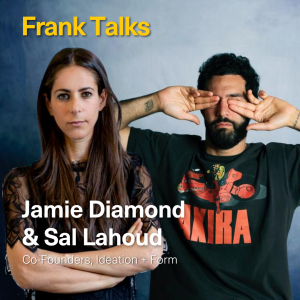This week we are very excited to share a rare look into Conservation with Friederike Steckling. Friederike is the Conservator at the prestigious Fondation Beyeler in Basel, Switzerland. Trained as a paintings conservator at the Conservation Center of NYU (Certificate of Advanced Study in Conservation and MA in Art History), Friederike has been Conservator at the Fondation Beyeler in Basel Switzerland since 2001 where she helped establish the conservation department. She is responsible for the care of the classical modern collection and conservation projects on works of various materials. Please enjoy Friederike’s unique Frank Talk!
What was your first job in the Arts?
My first experience in the art work world was a volunteer summer internship at the Registrar Department of the Wadsworth Atheneum in Hartford, Connecticut.
What was the most useful or important thing you learned at that job?
How important good administrative work is for managing a museum collection. I still think very highly of museum registrars, I love working with them and I feel they are the core department of museums.
Tell us a little more about yourself. When did you realize you wanted to pursue a career in this industry?
I knew early on that I wanted to be a conservator. My parents always had a lot of art books in the house and I loved to draw and paint. I also very much liked sciences such as chemistry — so art conservation was just the perfect way to combine all of my interests.
What do you do now?
I am a conservator at the Fondation Beyeler in Basel, Switzerland.
Where are you from?
I live in Basel but was schooled and raised in the USA, Switzerland and Germany.
What is the arts community like there?
The arts community in Basel is extremely abundant and active. Not only do we have many museums with amazing collections and big international exhibitions, but of course every year Art Basel takes place, during which it feels like the entire art world is in this city!
Has where you come from shaped what you do in the arts today?
Not really. There used to be big differences in approaches to conservation according to what country you were schooled, but this has evened out a bit. I do like having one foot in both the American and European side of conservation practice and I always try to combine the best of both practices.
What is the best piece of advice you can give about working in the art world?
Only get into this field if you have a real passion for art and artists, and are willing to work hard!
What is one of your greatest accomplishments in your career so far?
Every work of art that I successfully treat and help to ensure its longevity, is an accomplishment for me. However, I am actually most proud when a fragile work travelled safely around the world, because I specifically prepared it and designed a novel crating method to reduce any risks in the artworks journey.
What has been a challenge for you?
Taking risks! Sometimes it is necessary to take calculated risks when working with art. The responsibility that a conservator has, especially for highly insured art, whether it be for a treatment, transport or installation, can be quite daunting. With years of experience, however, this becomes easier. Now conservators have more and more started to share their experiences with each other in order to learn from past failures, which is helpful for individual conservators and the art of conservation overall.
What is something you do every day at work?
Look at art closely! Everything I do at work is connected with knowing the material and technique of the art very well. I take every opportunity I have to have a detailed look. Mostly I enjoy this in our museum in the early mornings with no one around besides our wonderful cleaning ladies. Being able to be so close to art is a privilege, and it is also crucial to train your eye. Most good conservators never stop looking.
What is one of the weirdest things you have had to do on the job in your career?
Conservators have to closely examine and document the strangest materials. I felt quite uncomfortable preparing condition reports on human bones (Jenny Holzer) and frozen blood (Marc Quinn).
What defines a good employee? What defines a good boss?
A good employee quickly understands what is expected of her/him but is also able to think outside the box and have creative ideas. A good boss is someone who can identify and apply an employee’s strengths, and who advances them adequately with appropriate challenges and furthering education.
What do you think makes a person hirable?
You should be open minded and flexible but also clearly show your strengths and weaknesses. I also cannot stress enough how important it is to be able to work well in a team.
What is your advice to making yourself stand out in your workplace?
Do not be afraid to voice new ideas or challenge old standards. And…work hard and be nice!
What are things you can do proactively to boost your CV?
Show that you are informed and up to date about the art world. Also, whacky hobbies can be a plus!
Are there any tips you can give people entering the workforce?
Go to as many exhibitions and museums that you can, even if it is just for an hour or less. The more you school your eye not only in the works of art but also in their presentation and installation, the better. Also, you must have a passion for art and artists.
What is the best exhibition you have seen in the last year?
Ellsworth Kelly Anthology at the Museum Voorlinden, NL.
If you could own a work by 5 different artists, who would be in your collection?
Roy Lichtenstein. Mark Rothko. Canaletto. Sandro Botticelli. Kalthleen Gilje.




